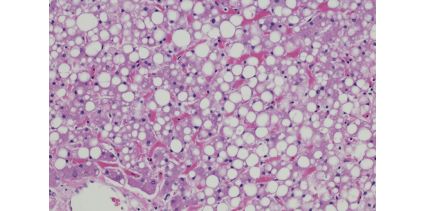April 26, 2016
Investigating Bioactive Leptin in Obesity Research
The Biology of Leptin
Leptin is a hormone composed of 167 amino acids and is primarily produced by adipocytes, therefore providing a signal to the energy state of organisms. By binding to the leptin receptor, the analyte influences activity within the JAK-STAT pathway and thereby regulates energy metabolism and food intake in particular1,2. Leptin levels show a circadian variation (+/- 30%) and are dependent on BMI, pubertal status, and gender. In addition to the expression itself, the bioavailability of leptin is regulated via a binding protein, as with many hormones possessing type I cytokine receptors3.The Role of Leptin
[caption id="attachment_4252" align="alignleft" width="446"] The functional role of leptin (adapted from Lago et al.4)[/caption]
Leptin plays an important role in a variety of functions including energy expenditure, vascular function, and reproduction. Leptin also lends to the healthy functioning of the pancreas, kidneys, muscles, bones and cartilage4. The soluble leptin receptor (sOB-R) is a major leptin binding protein in circulation. Levels of this receptor affect leptin’s bioavailability and function5. In healthy subjects, food intake is reduced by increasing concentrations of leptin and by falling sOB-R quantities. In various pathological situations, however, this regulatory circuit is interrupted3. For instance, leptin levels in the circulation of obese persons are increased, but result in no satiety. This phenomenon, known as leptin resistance, could be related to a reduction in the number of leptin receptors, and may influence the intracellular signal transduction by other parameters3. Investigating bioactive leptin in obesity research may shed more light on the bioavailability and functionality of leptin, as well as its implications in various physiological conditions.
The functional role of leptin (adapted from Lago et al.4)[/caption]
Leptin plays an important role in a variety of functions including energy expenditure, vascular function, and reproduction. Leptin also lends to the healthy functioning of the pancreas, kidneys, muscles, bones and cartilage4. The soluble leptin receptor (sOB-R) is a major leptin binding protein in circulation. Levels of this receptor affect leptin’s bioavailability and function5. In healthy subjects, food intake is reduced by increasing concentrations of leptin and by falling sOB-R quantities. In various pathological situations, however, this regulatory circuit is interrupted3. For instance, leptin levels in the circulation of obese persons are increased, but result in no satiety. This phenomenon, known as leptin resistance, could be related to a reduction in the number of leptin receptors, and may influence the intracellular signal transduction by other parameters3. Investigating bioactive leptin in obesity research may shed more light on the bioavailability and functionality of leptin, as well as its implications in various physiological conditions.
Defects in the Leptin Gene
It was recently demonstrated that a naturally occurring transversion in the leptin gene (c.298G → T) results in an amino acid exchange of asparagine to tyrosine in position 100 (pD100Y)6. An in vitro cell culture model revealed that this mutated leptin was still secreted, but unable to bind to the receptor and, therefore, unable to exert intracellular signaling6. In vivo, this mutation results in the disturbance of food intake regulation and, as a result, in extreme obesity6. Under treatment with recombinant human leptin, food intake behavior normalized and body weight was reduced significantly6.Investigating Bioactive Leptin in Obesity Research
Since the mutant leptin is recognized by the classical immunological leptin test systems, either a genetic test such as a sequencing of the obesity gene, or a functional assay allowing for leptin to bind to the soluble receptor, is necessary for diagnosis. ALPCO’s Bioactive Leptin ELISA allows for the measurement of leptin in human serum by binding it to the soluble receptor, also known as the leptin binding protein. Based on the measurement of receptor binding leptin, the assay provides additional information on the biological reactivity of the circulating leptin molecules. Mutations resulting in less or no binding leptin can be detected by a significant reduction of the measured bioactive leptin. Especially in connection with measurement of total leptin by classical immunoassays, the receptor binding characteristics of leptin can easily be detected and quantified. This could help to evaluate mutation rates of the leptin gene through an inexpensive and efficient method, while also furthering obesity research by improved patient stratification in clinical studies.Resources
Download our brochure to learn about the features of our Bioactive Leptin ELISA. Download Brochure
Download Brochure
References
- Myers et al. (2008). Mechanisms of leptin action and leptin resistance. Annu. Rev. Physiol., 70, 537-56.
- Park & Ahima. (2015). Physiology of leptin: Energy homeostasis, neuroendocrine function and metabolism. Metabolism Clinical and Experimental, 64, 24-34.
- Schaab & Kratzsch. (2015). The soluble leptin receptor. Best Pract Res Clin Endocrinol Metab., 29(5), 661-70.
- Lago et al. (2007). Adipokines as emerging mediators of immune response and inflammation. Nature Clinical Practice Rheumatology, 3(12), 716-24.
- Kiess et al. (2002). Circulating soluble leptin receptor and free leptin index during childhood, puberty, and adolescence. JCEM, 87(10), 4587-4594.
- Wabitsch et al. (2015). Biologically inactive leptin and early-onset extreme obesity. N Engl J Med, 372, 48-54.

